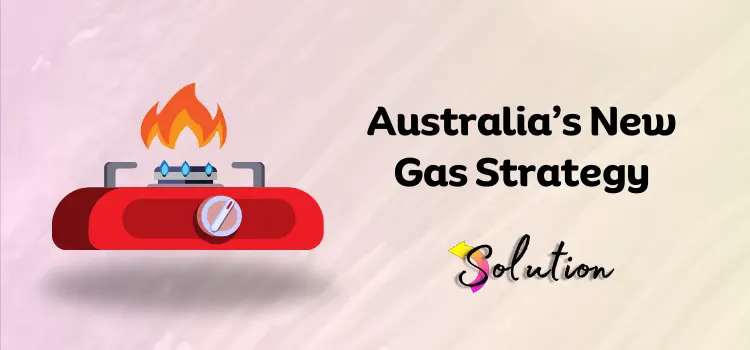
The International Energy Agency, also known as the IEA, predicts that global gas demand will decrease in the coming years due to efforts to limit global warming to 2.4 degrees Celsius. This shift reflects a growing focus on renewable energy sources and sustainable practices worldwide. Countries like Japan and South Korea are experiencing decreases in LNG imports, which could impact Australia’s gas industry. The Australian Government has outlined a gas strategy to ensure that gas continues to play a key role in supporting the economy’s shift towards net zero emissions, in collaboration with other nations.
With the global supply of LNG growing quickly, there is a predicted surplus in the market by the second half of this decade. Australia, a high-cost gas producer compared to countries like the US and Qatar, may struggle to compete as capacity increases. This implies that Australian gas companies may encounter difficulties in an anticipated decline in the market for their product.
The Australian Government has created a plan to help the economy move towards net zero emissions by focusing on gas as a transitional energy source. This strategy aims to reduce greenhouse gas emissions while also ensuring a stable energy supply for the country. Let’s explore the goals of this initiative.
What are the Objectives of Australia’s Gas Strategy?
The Australian Government’s gas strategy aims to increase the country’s gas supply, reduce consumer prices, and support economic growth. By implementing this strategy, the government hopes to create more jobs in the gas industry and ensure a reliable energy source for households and businesses. Overall, the goal is to make gas more accessible and affordable for all Australians.
- The new gas strategy aims to protect energy security and affordability.
- Encourage the Australian economy to decarbonize.
- Helping Australian trade partners on their own paths to net zero.
- Entrench Australia’s reputation as an attractive trade and investment destination.
What are the Fundamental Principles of Australia’s Gas Strategy?
Here are six key principles that will help the Australian government achieve its goals outlined in the gas strategy. Make sure to carefully review each principle to fully grasp the government’s policy direction. By following these principles, the government aims to effectively implement its gas strategy and address key issues in the energy sector.
Principle 1: Support global emissions reductions to decrease the impact of climate change and aim to reach zero emissions by 2050.
To combat climate change, Australia is committed to reducing global emissions and aims to achieve net zero emissions by 2050. To reach this goal, the government is focusing on optimizing gas production and usage, as well as transitioning to more energy-efficient and electrified processes that currently rely on natural gas. This will aid in decarbonizing natural gas use in Australia and align with the country’s economy-wide commitment to reduce emissions.
Secondly, to make the transition to low-emission gases, the government is focusing on reducing emissions from natural gas as much as possible and offsetting any remaining emissions. They are also working with large industries to help them shift towards cleaner energy sources. The two main strategies identified by the government are aimed at combating current usage patterns and facilitating a smooth transition for these industries.
- The government has developed strategies to collaborate with industries and regulators to reduce the release of methane gas into the atmosphere by improving operational practices. By following the government’s six declaration plans, they can take additional steps to further decrease harmful emissions and protect the environment.
- Supporting the region’s transition to net zero emissions and promoting the geological storage of CO2 through offshore CCS. This involves releasing acreage for carbon capture and storage, which will help reduce greenhouse gas emissions and combat climate change.
Principle 2: Limit the cost of gas to ensure its affordability.
Gas prices in Australia are still affordable as the country moves towards net zero emissions. Australia’s competitive advantage lies in its abundant resources and high standard of living, which depend on reliable, affordable, and clean energy. To ensure the resilience of the energy system and keep costs low during this transition, continuous gas development and more flexible gas infrastructure are necessary.
To ensure that gas remains affordable and accessible, the government must make decisions that promote timely development and discourage unnecessary delays. The Australian Government is committed to managing short-term affordability challenges through specific interventions like the Energy Price Relief Plan and the Gas Market Code of Conduct.
Additionally, to ensure that Australia has a stable and secure energy supply in the long term, they are actively working with East Coast LNG exporters through agreements like the Heads of Agreement. Furthermore, they have implemented the Australian Domestic Gas Security Mechanism (ADGSM) and granted AEMO market powers to further support our domestic energy security efforts.
Also Read:-The Power of Money
Principle 3: Encouraging the improvement of extant gas discoveries in the gas-producing regions.
To avoid potential gas shortages during the transition period, the government plans to collaborate with industries, states, and territories to expedite the development of current gas reserves in gas-producing areas. The government predicts that a gas shortage may arise on the west coast in 2030, while an annual supply gap is anticipated to start by the end of 2028 on Australia’s east coast and gradually increase.
Principle 4: Managing the supply chain during the transition
Overall, the transition to electrification in households and small businesses by 2050 will greatly depend on the availability and affordability of renewable technologies and low-emissions gases. The department’s analytical report highlights the need for continued research and development in these areas to ensure a smooth transition towards a more sustainable energy future.
Gas-powered generation (GPS) will play a major role in Australia’s shift to a net-zero economy, serving as the primary source of electricity. This transition is expected to continue well into 2050 and beyond, with gas helping to stabilize electricity supply as coal plants are phased out.
Note: The GPS system will help us handle busy times when there is a lot of demand for services, especially during short periods throughout the day. This will ensure that we can meet the needs of our customers even when other options are not available.
Principle 5: Transforming the electricity and gas markets.
The Australian government divided the strategy into three main segments to ensure smooth and effective operations. Each segment has its own responsibilities and functions to ensure the proper functioning of the gas strategy.
- The first segment contains companies responsible for finding, extracting, and refining natural gas from different locations. This process involves locating gas reserves underground, drilling wells to extract the gas, and then processing it to make it suitable for use as a fuel source.
- The second part of the system includes storage facilities for gas and a network of pipelines that deliver gas to homes and businesses. Additionally, there are LNG import terminals that help bring in gas from other locations.
- Lastly, there are homes and businesses that rely on natural gas for various purposes, such as heating, cooking, and manufacturing. This segment represents a significant portion of natural gas consumption in the country.
The government is working on improving the gas market by focusing on the midstream and upstream segments. They plan to repurpose current infrastructure and enhance gas storage to better manage supply and demand in the market. This will help create a more balanced and efficient system for all stakeholders involved.
Principle 6: Maintaining a dependable training partner for low-emission gases and LNG
The government is committed to maintaining the trade and export of gas to countries worldwide, as outlined in this principle. Although projections suggest a decline in Australia’s LNG exports by 2050, the government remains confident in the continued importance of LNG in the future.
The government believes that by continuing to supply LNG reliably and being a responsible player in addressing climate change, Australia can form new partnerships in growing industries like hydrogen and clean energy exports. This will not only benefit the country’s economy but also contribute to global efforts to reduce carbon emissions.
Limitations of the Australian Government’s Gas Strategy
The Australian government’s gas strategy has both advantages and disadvantages that critics have been quick to point out. Some of the main limitations include concerns about environmental impact, potential price increases for consumers, and the reliance on a non-renewable energy source. Despite these drawbacks, the government believes that increasing gas production is necessary for economic growth and energy security.
Confronting an Issue with Carbon Absorption
So far, there is limited proof that carbon capture technology is effective on a large scale. The only project in Australia that has been successful in implementing this technology is the Gorgon project on Barrow Island in Western Australia, although it has not met its goal of capturing 80% of emissions as initially planned. Due to failures in containment and errors in calculations, the actual emissions were much higher than expected, ranging from 157% to 226% above the estimated amount. This resulted in an excess of approximately fifteen million nineteen thousand tonnes of CO2 being released into the atmosphere.
In late 2022, a study on carbon capture and storage programs revealed that many of the biggest projects worldwide were not meeting their expected goals. Out of the 13 major schemes analyzed in a global report, most have fallen short of capturing CO2 emissions as originally planned.
Despite the potential benefits of carbon capture, there is a risk that projects relying on this technology may not be successful in reducing emissions. If these projects fail, they could end up releasing even more harmful gases into the atmosphere, causing irreversible damage. It is important to carefully consider the potential consequences before expanding fossil fuel projects based on carbon capture technology.
Gas Strategy Ignores the Unregulated Exports That Lead to Excessive Pricing
Critics often point out that setting principles alone may not be enough to ensure affordable gas and energy security during a transition period. They emphasize the importance of expanding and developing new gas supply projects to meet growing demand. However, despite these efforts, gas prices on the east coast of Australia have not seen a significant decrease.
The skyrocketing gas prices that consumers are experiencing can be directly attributed to the lack of government oversight in the LNG export market. Without proper regulations in place, consumers can expect even higher prices in the near future.
Australia is a major player in the gas production industry, with a large portion of their output being exported. In fact, last year they exported nearly 18 million metric tons, leaving only 10 percent for domestic use. With the growing export market, Australians can expect to see an increase in the cost of gas for domestic consumption on the east coast.
Note: Without regulations requiring gas producers to set aside a portion of their product for domestic use, the increasing focus on exports could lead to domestic consumers facing stiff competition from the global market. This lack of safeguards may result in higher prices and potential shortages for those relying on gas within the country.
Conclusion!
Australia’s ambitious gas strategy is set to catapult the nation into a leading position in the global energy market. However, environmentalists are raising alarms about the potential consequences of ramping up fossil fuel production on our planet’s climate. Australia finds itself at a crucial crossroads as it navigates the transition to cleaner energy sources. Balancing economic growth with environmental protection will be key to securing a sustainable future in the ever-changing global energy market. Success will depend on effectively managing the competing demands of energy security, economic prosperity, and environmental sustainability.


